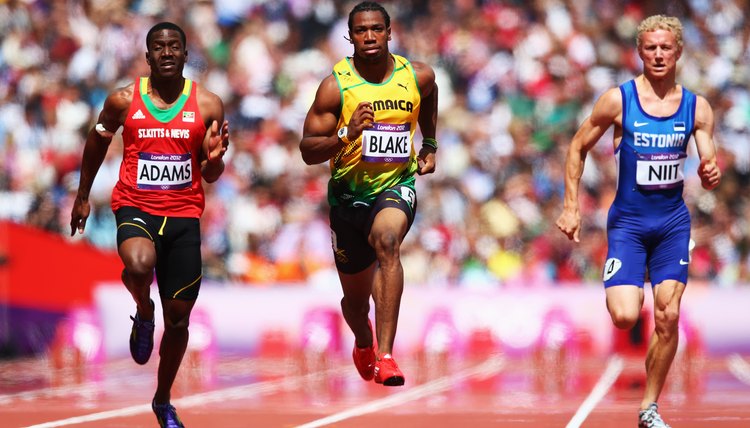How to Increase Leg Strength for Sprinting

For competitive sprinters and athletes alike, leg strength is a vital factor in increasing sprint speed. According to the National Strength & Conditioning Association, the stronger your leg muscles are, the more force you can apply, meaning you can accelerate quicker and maintain a faster sprint speed. However, for optimal results, sprinters need a specific strength training program, rather than a generic bodybuilding leg workout.
Do squats twice weekly. While there may be a common belief that training with heavy weights can actually make athletes slower, this is far from the truth, says strength coach Charles Poliquin. Perform one session focusing on speed and power. Choose a weight that is around 60 percent of your single rep maximum -- the heaviest weight you can lift for one repetition -- and do six sets of three reps with it. In your second session three to four days later, use around 75 percent to 80 percent of your single rep max and do five sets of five.
Set a wooden box or set of aerobic steps to knee height and jump onto it with as much speed and force as you can. These box jumps develop speed and power and activate your central nervous system, which helps with the start of your sprint, according to Chad Smith, owner of the Juggernaut Training Facility. Smith advises doing three sets of three jumps before each squatting session, using a box that is high enough that you have to put maximum effort into each jump.
Attach a weights sled harness around your waist and sprint 50 meters as fast as possible. Take 60 to 90 seconds' rest and repeat five more times. Sled sprints increase your acceleration and build up speed endurance over short to medium distances. Mike Boyle, author of "Functional Training for Sports," recommends using 10 percent of your body weight on the sled.
Tips
If you're unsure of any exercises, ask a qualified trainer or coach to assist you.
References
- National Strength & Conditioning Association: Resistance Training for Short Sprints and Maximum-speed Sprints
- 8 Stupid Myths About Squatting: Charles Poliquin
- Muscle & Fitness: Activating Your CNS for Maximum Performance: Chad Smith
- Perform Better: Using a Weighted Sled for Acceleration Improvement: Mike Boyle
Writer Bio
Mike Samuels started writing for his own fitness website and local publications in 2008. He graduated from Peter Symonds College in the UK with A Levels in law, business and sports science, and is a fully qualified personal trainer, sports massage therapist and corrective exercise specialist with accreditations from Premier Global International.
